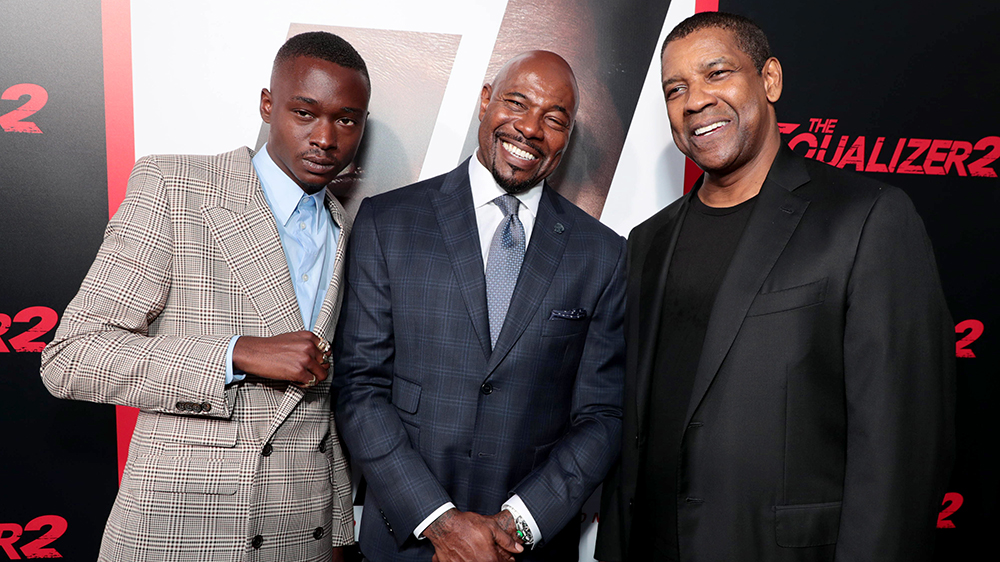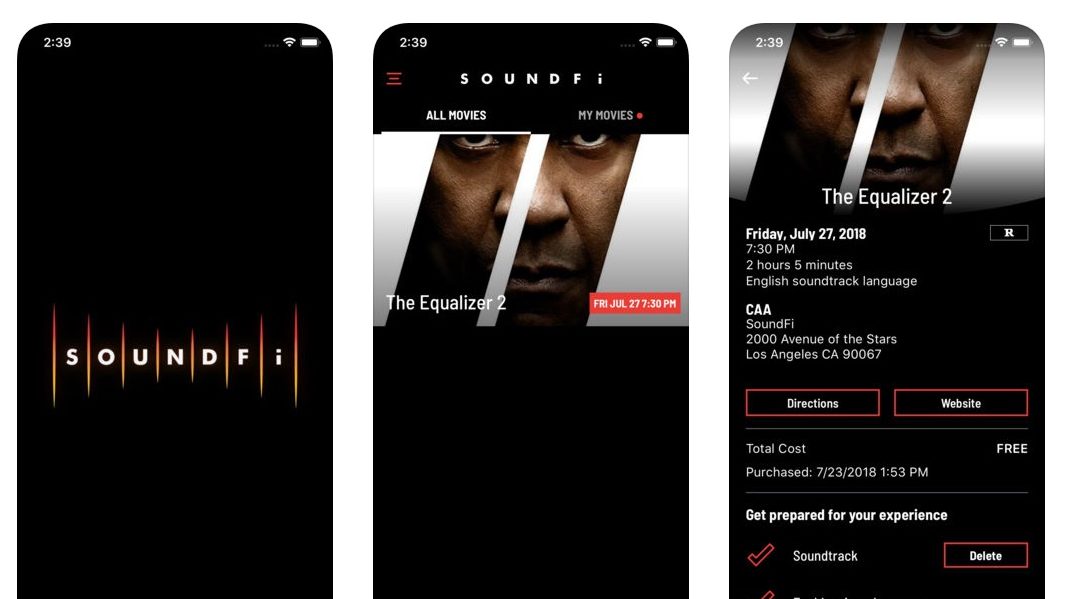This Startup Wants You to Bring Your Headphones to the Movies
By Janko Roettgers LOS ANGELES (Variety)
Movie fans who go to watch the film in Los Angeles or Scottsdale can download a dedicated SoundFi app onto their iPhones, and then listen to a binaural version of the movie’s audio track over their headphones.
Instead of just hearing a 5.1 version, they get to hear bullets flying over their head, and audio seemingly coming from all sides — an experience similar to that of an expensive Dolby Atmos setup, which is currently only available in a small number of theaters. To achieve this, SoundFi took the original post-production audio tracks of the movie, and then mixed them down to spacial audio optimized for personal headphones.


The company also worked with Sony Pictures to add special marker signals that are inaudible to the human ear to the “Equalizer 2” soundtrack. Once a consumer fires up SoundFi’s app in the theater, her phone constantly listens for those markers to keep the action on screen synced up with the audio that’s being played over the headphones.
“We spent a lot of time on sync accuracy,” said SoundFi CEO Chris Anastas. He claimed that the app was even able to detect how far away from the screen an audience member is, which allows it to account for any delays introduced based on someone’s seat position.
In a demo given to Variety earlier this week, SoundFi’s app delivered impressive 3D audio for action scenes, and a direct comparison between stereo and binaural audio sound for sports clearly made for a much more immersive experience.
 The Equalizer 2
The Equalizer 2Plus, SoundFi has the potential to offer features that film fans otherwise wouldn’t get in a theater. “You can go to the concession stand and still listen to the film,” Anastas explained.
In the future, SoundFi could also offer foreign language dubs to make movies more accessible to international audiences — a feature that is already offered by some competitors, including Theater Ears. Even hardcore film fans, who may scoff at the idea, could get something out of a personalized audio experience, he said. “I want to bring the director’s commentary back.”
SoundFi’s initial roll-out is little more than a test run, with just five screens total making use of the technology for “.” However, Anastas already has big plans for the technology, and he just won over the film’s director Antoine Fuqua to join the company as an executive advisor and partner.
Future plans include an option to monetize SoundFi by upselling consumers a dollar or two for a better in-theater audio experience, as well as the ability to supply studios with data collected from consumers who have opted in to share it. This could one day even include biometric data from fitness headphones capable of measuring heart rates and more. “We want to measure your emotional response,” he said.
The big question is: Will consumers balk at the idea of wearing their headphones in a movie theater? Anastas admitted that the experience may be unusual to some, but he also argued that younger audiences already take their headphones everywhere.
Anyone who is willing to try it should go all in, and not use inconspicuous, tiny earbuds, advised Anastas: “It is more impressive with over-the-ear headphones.”
